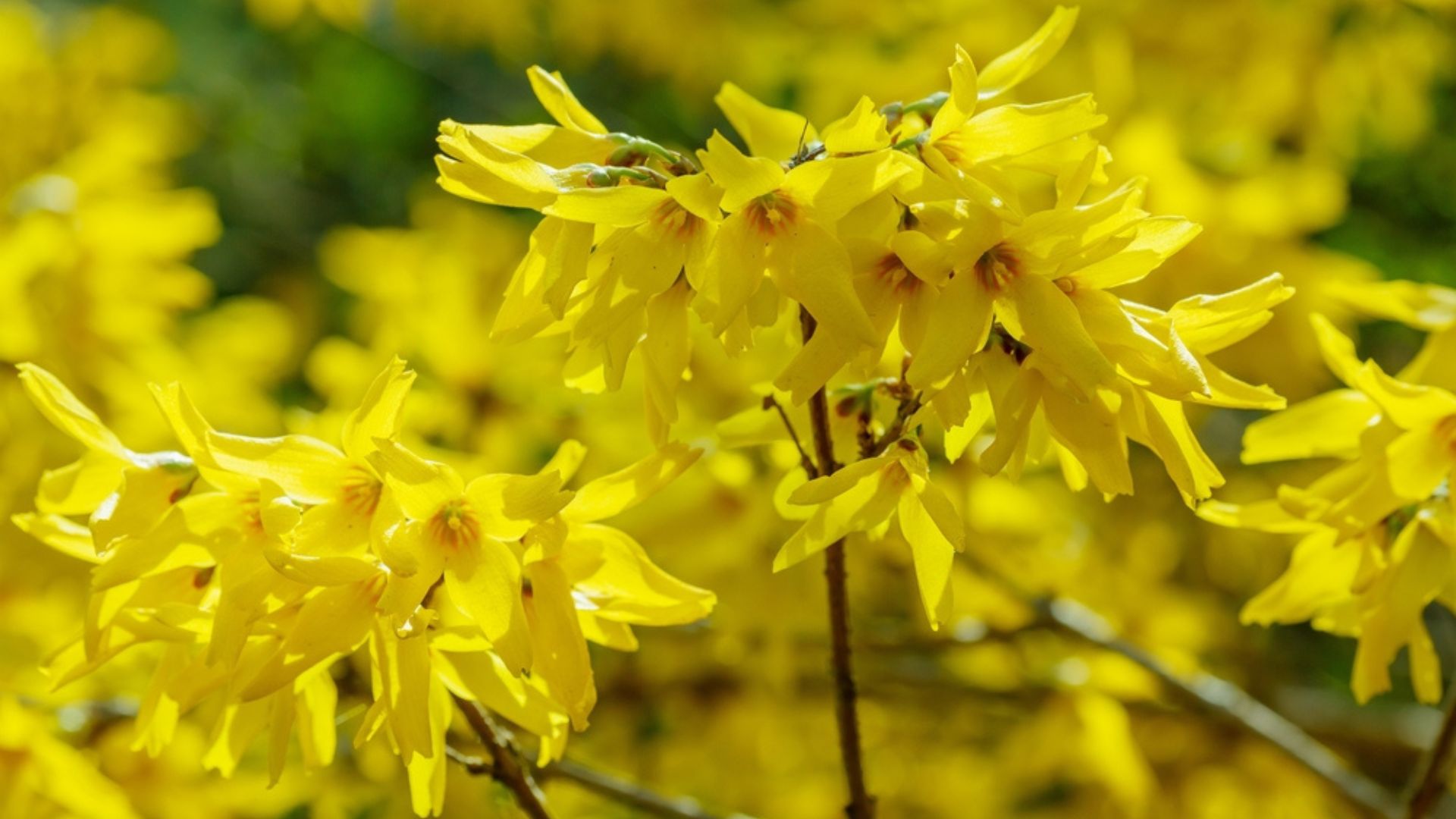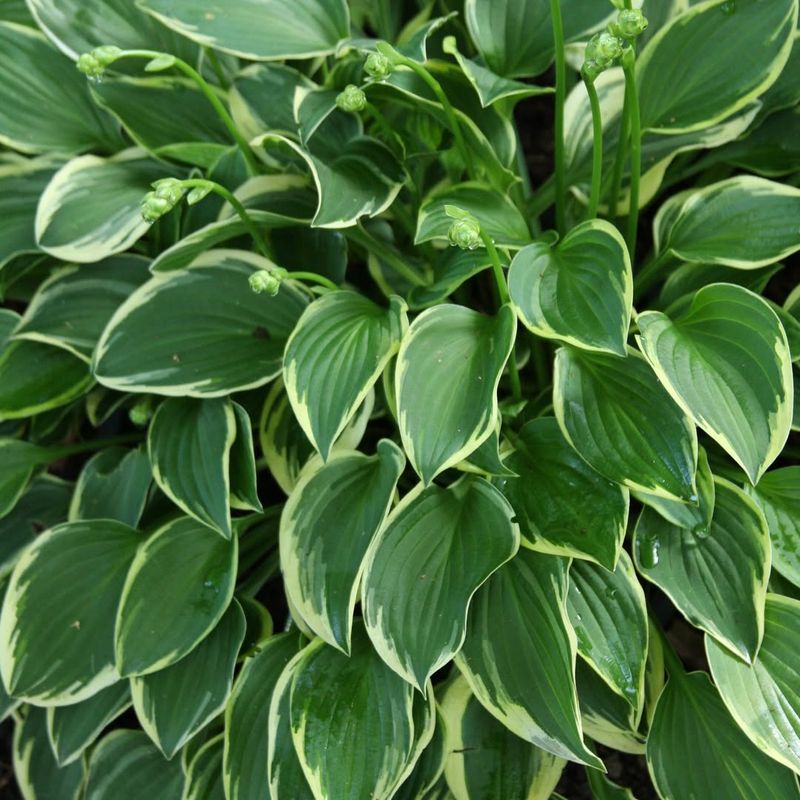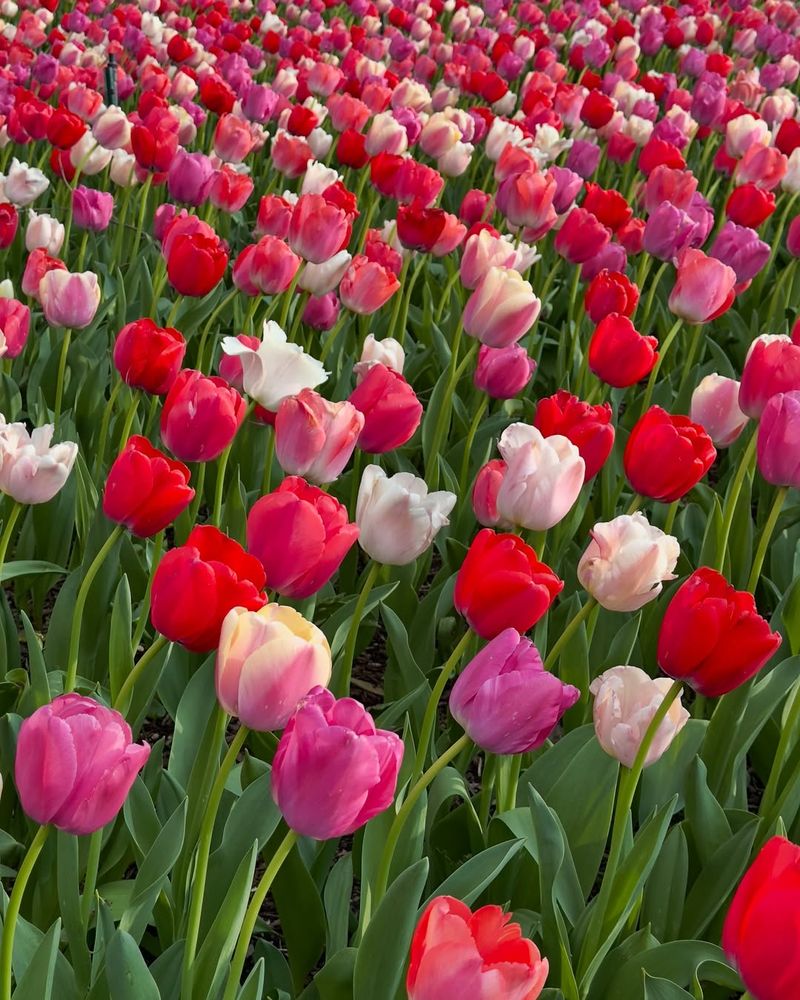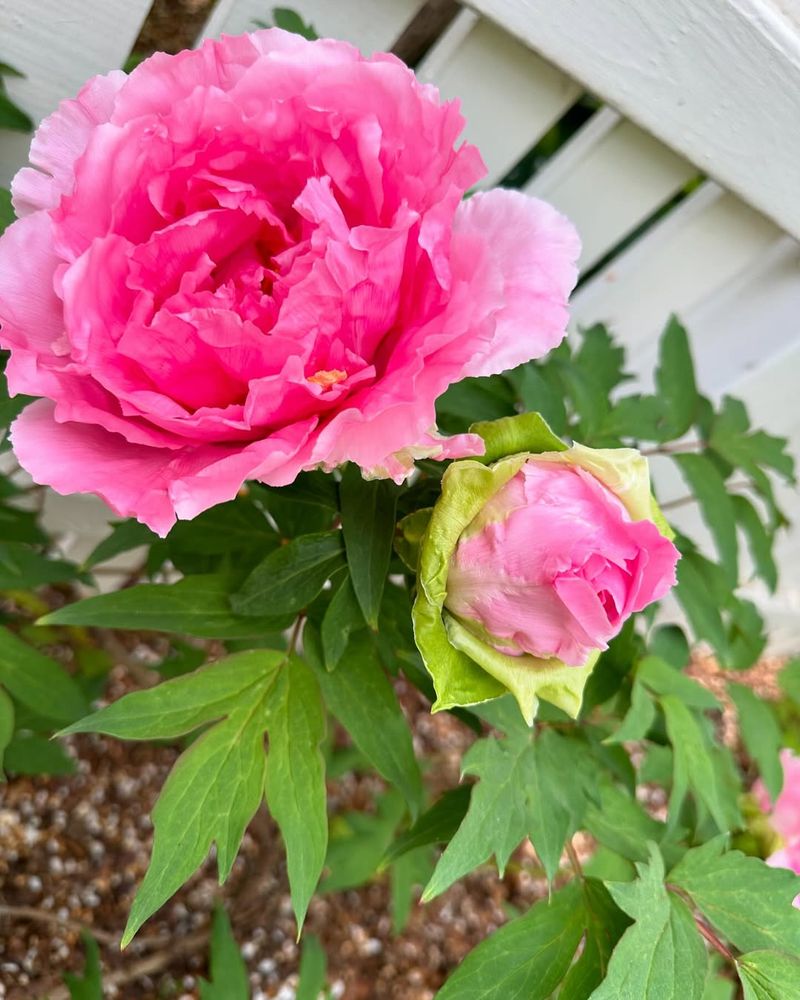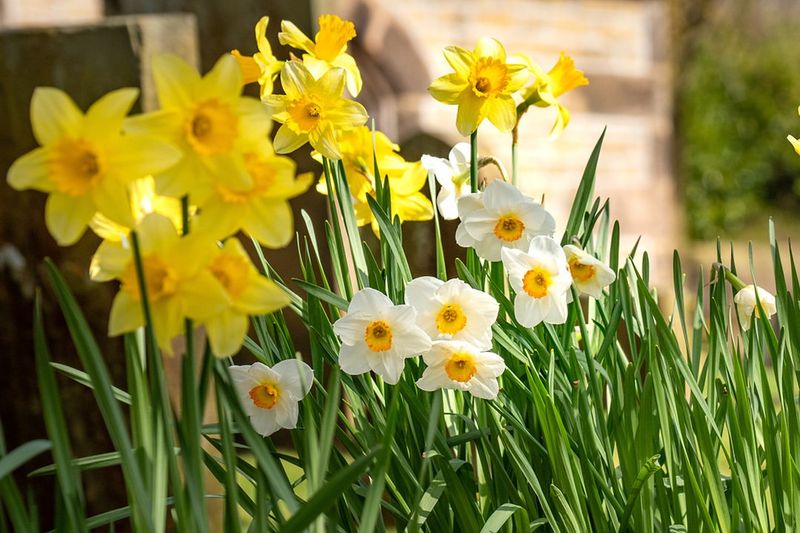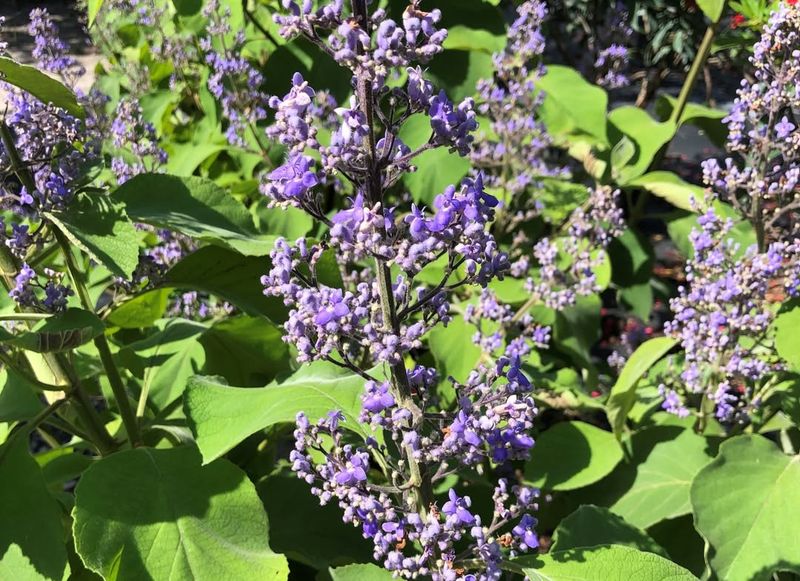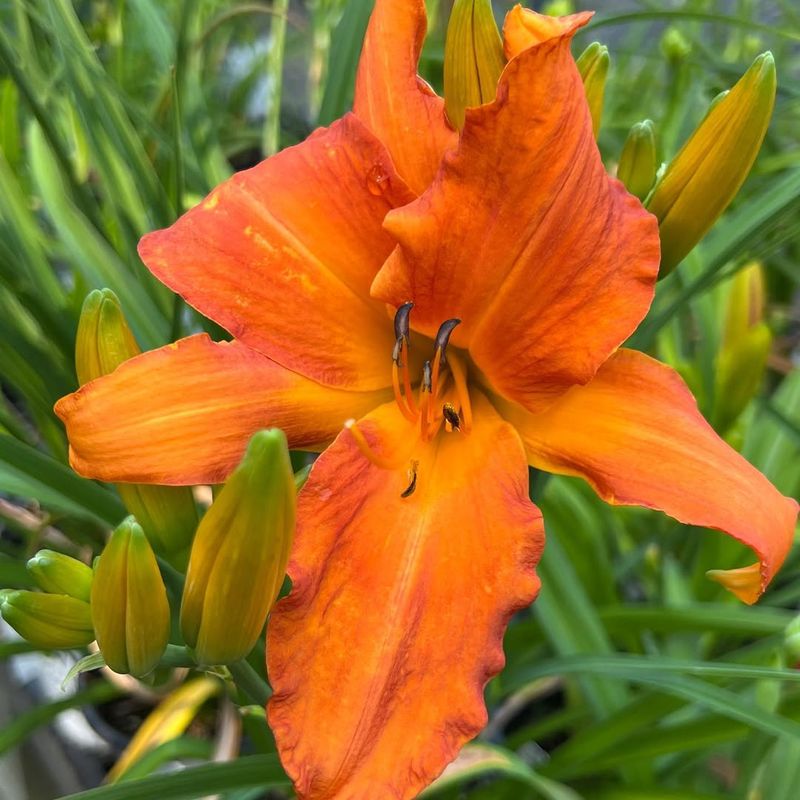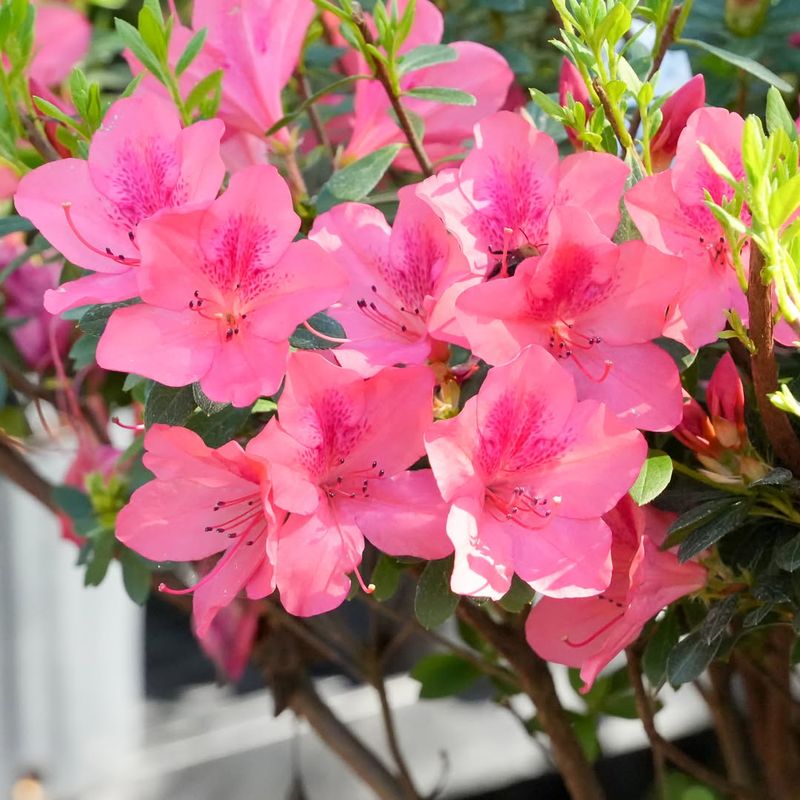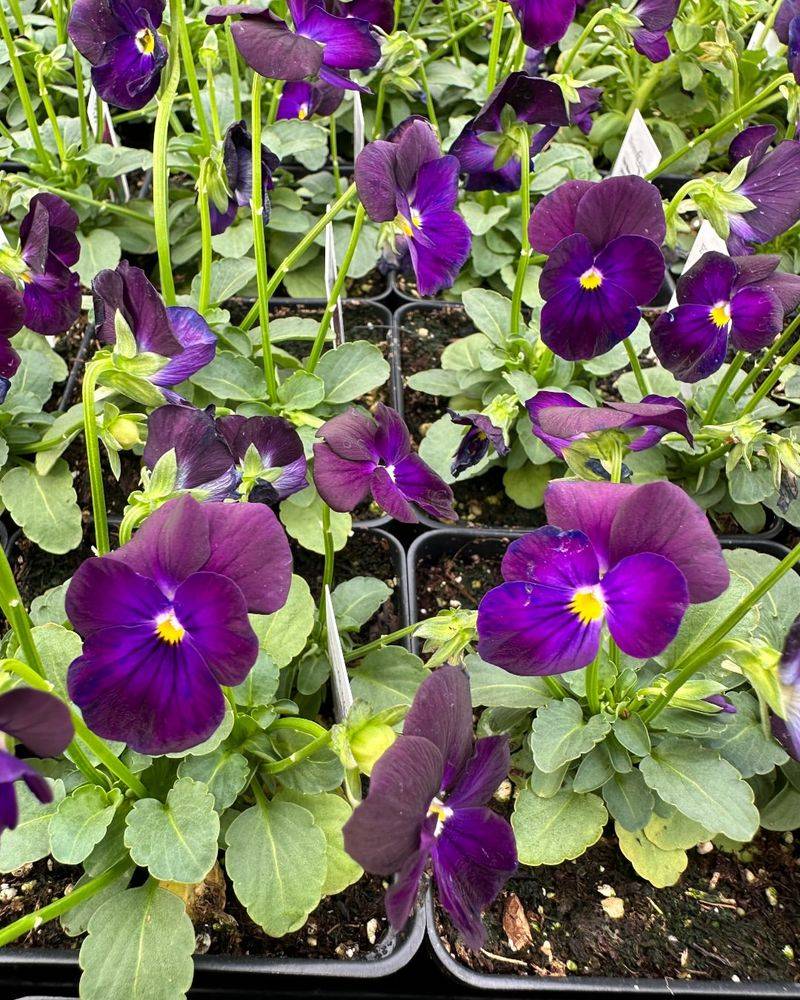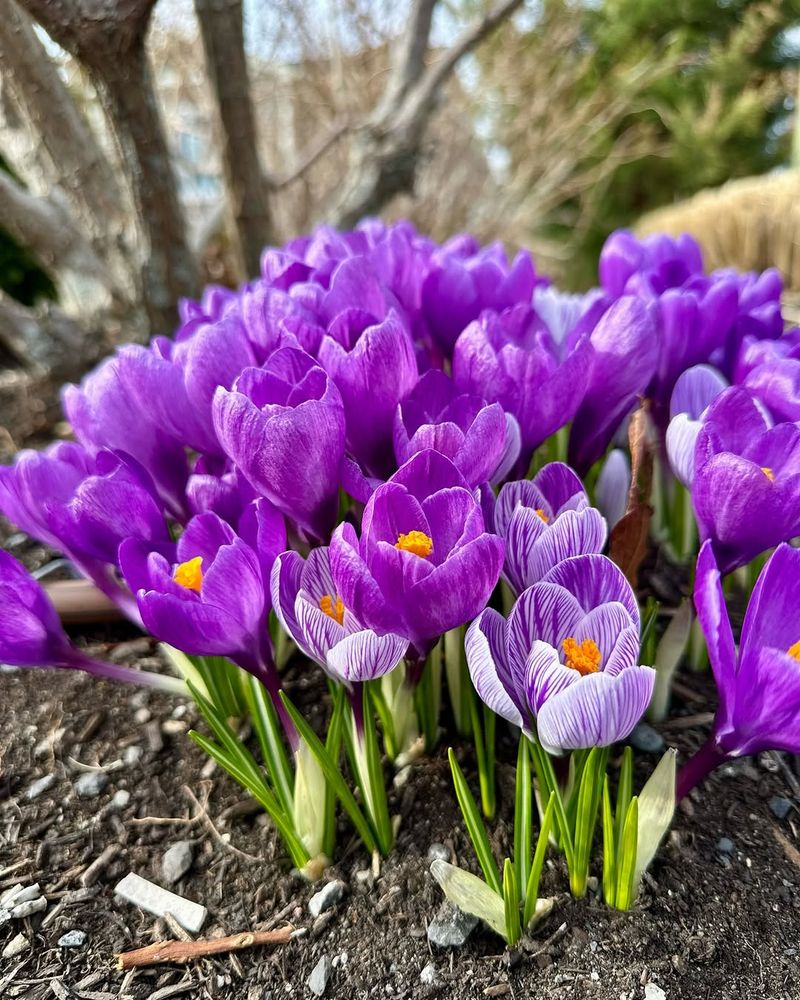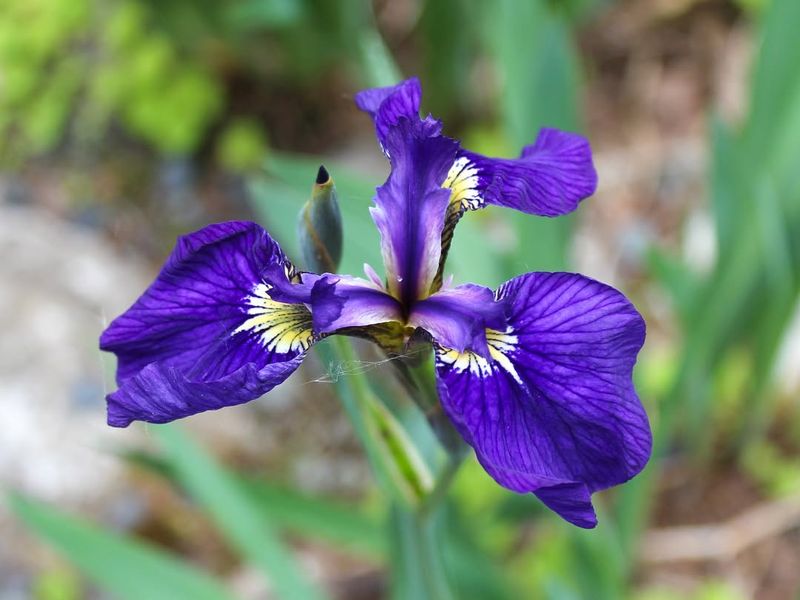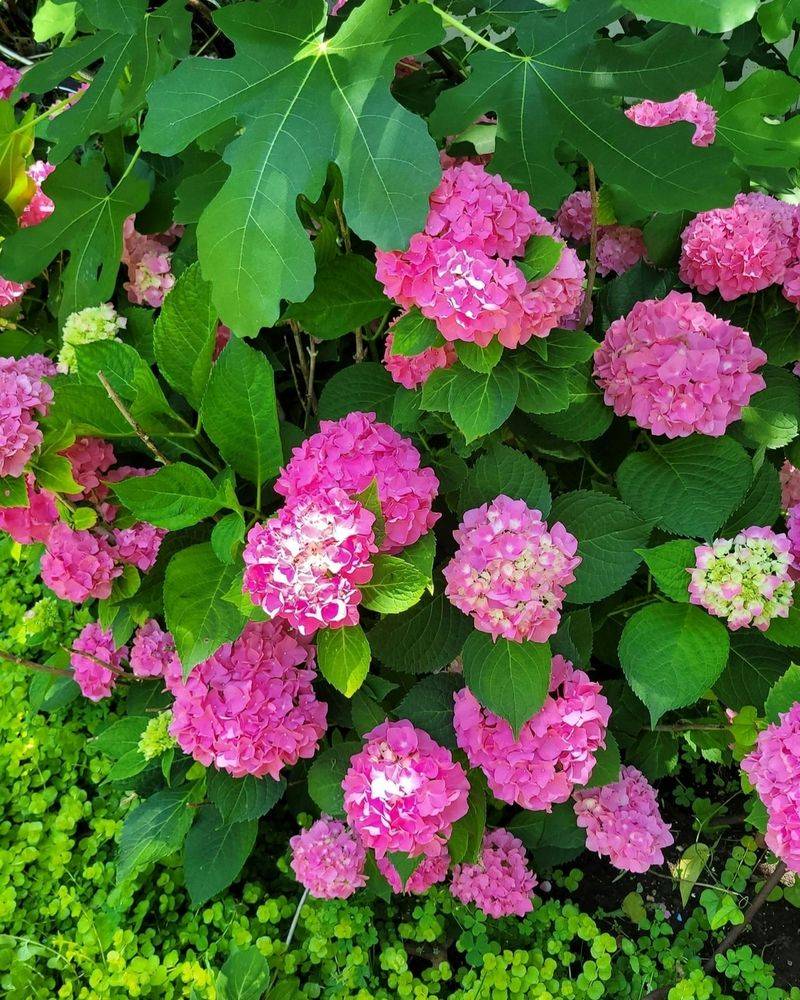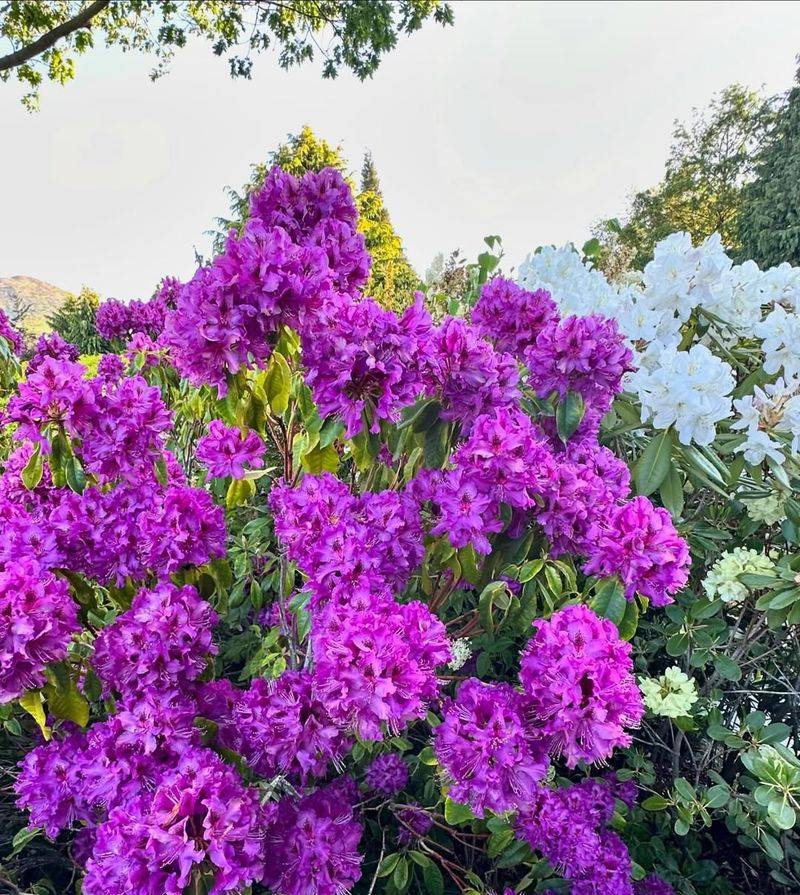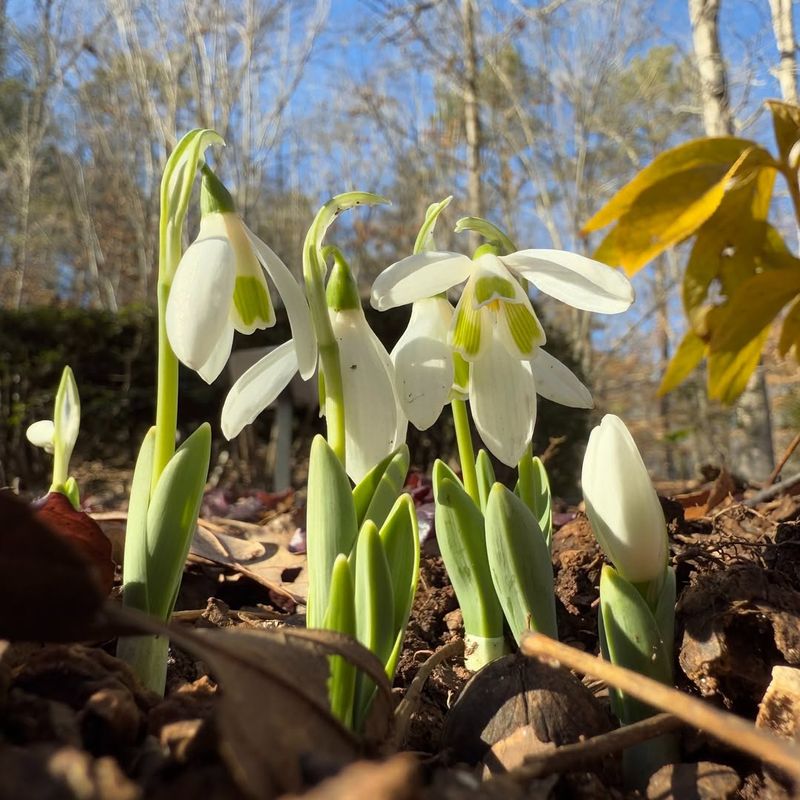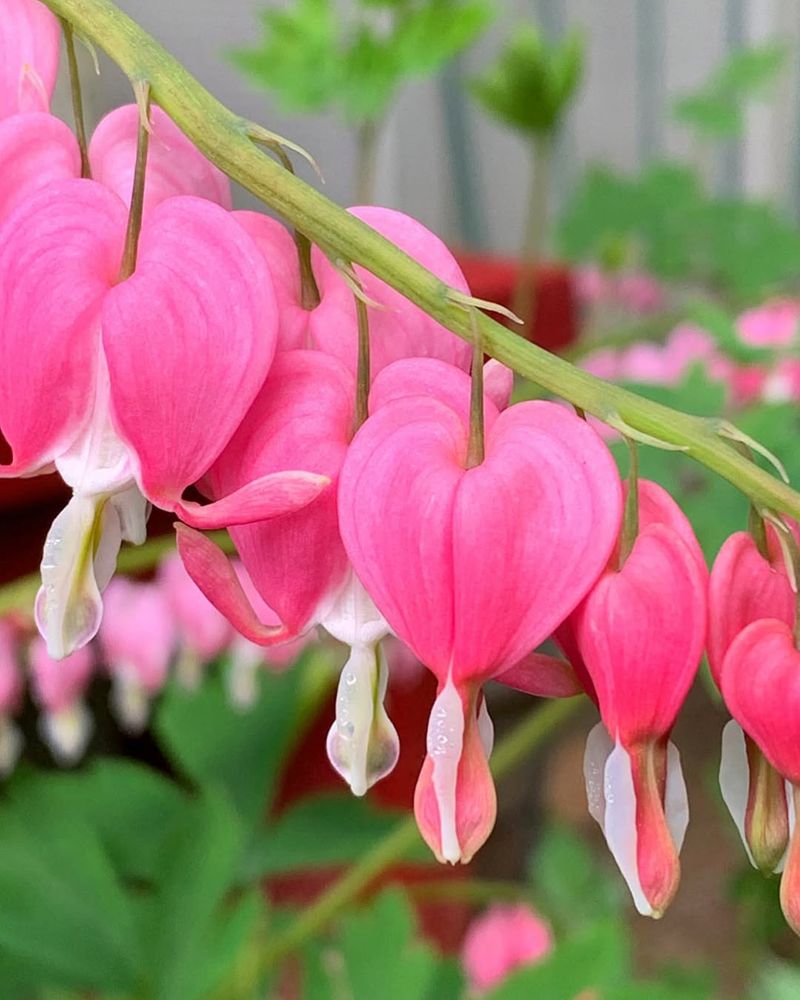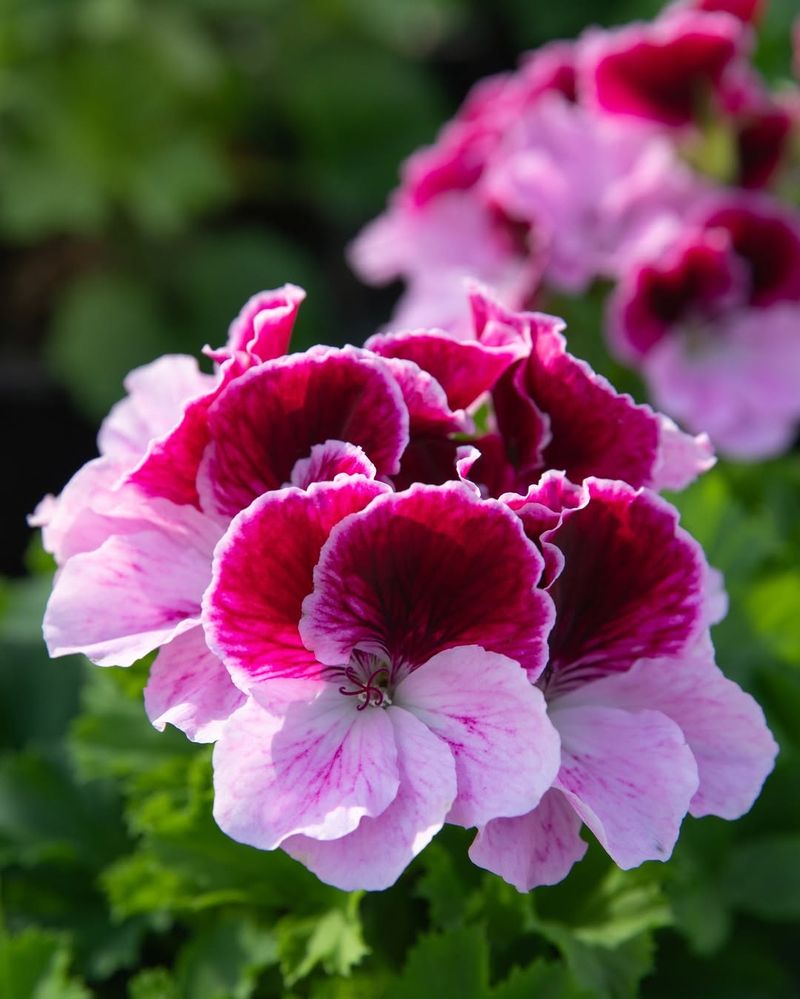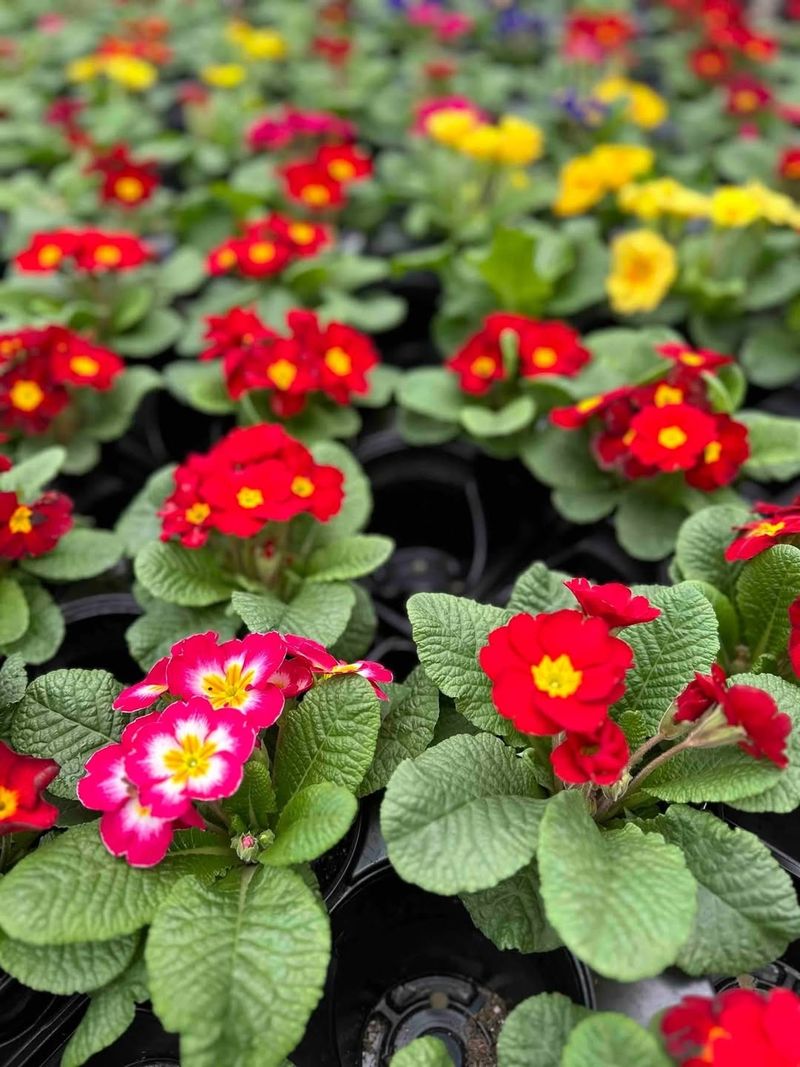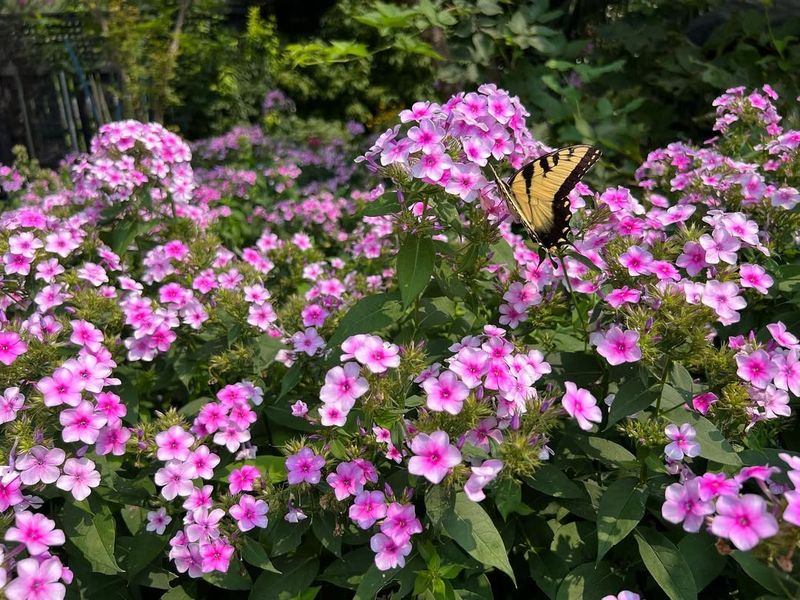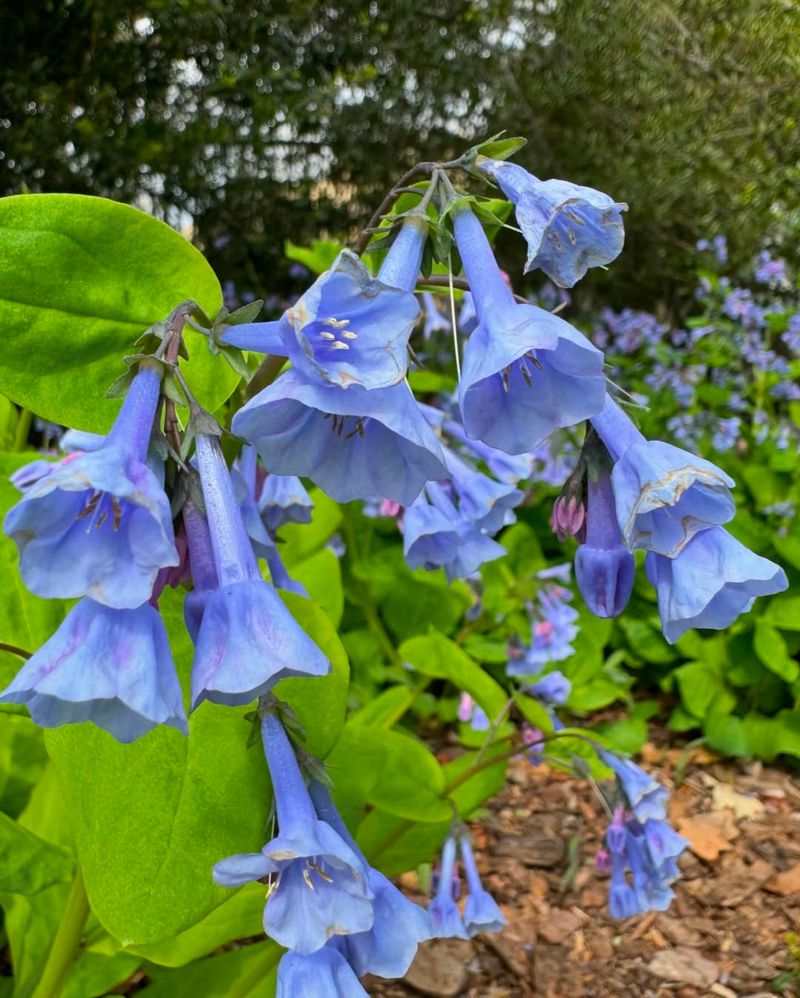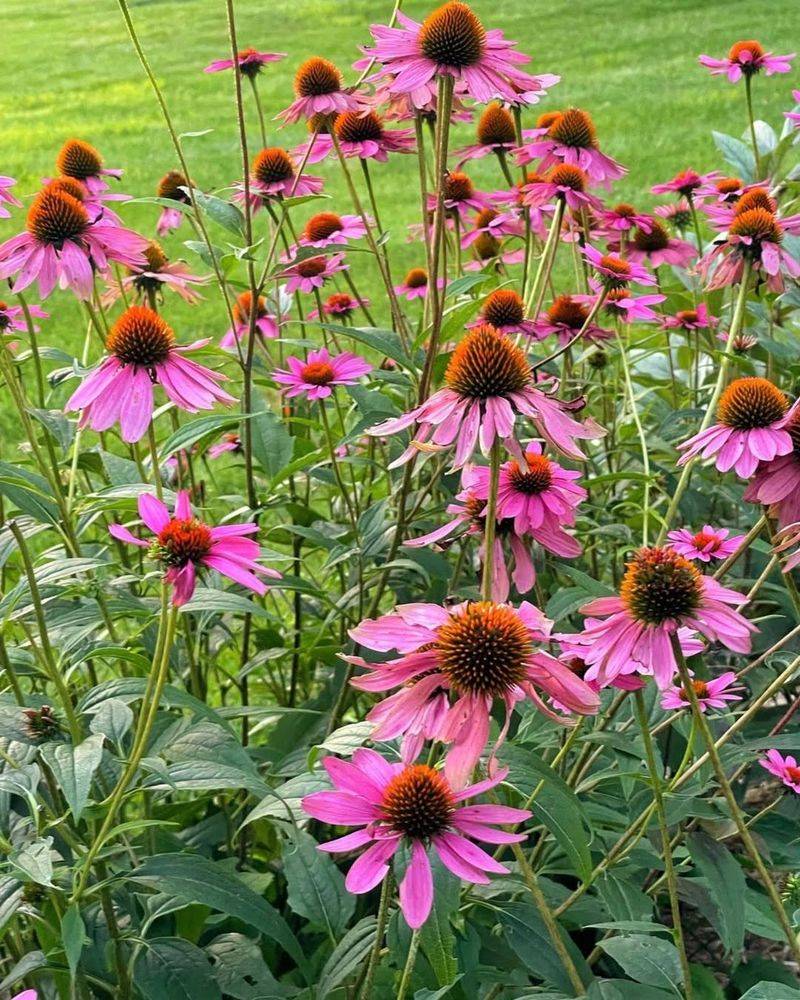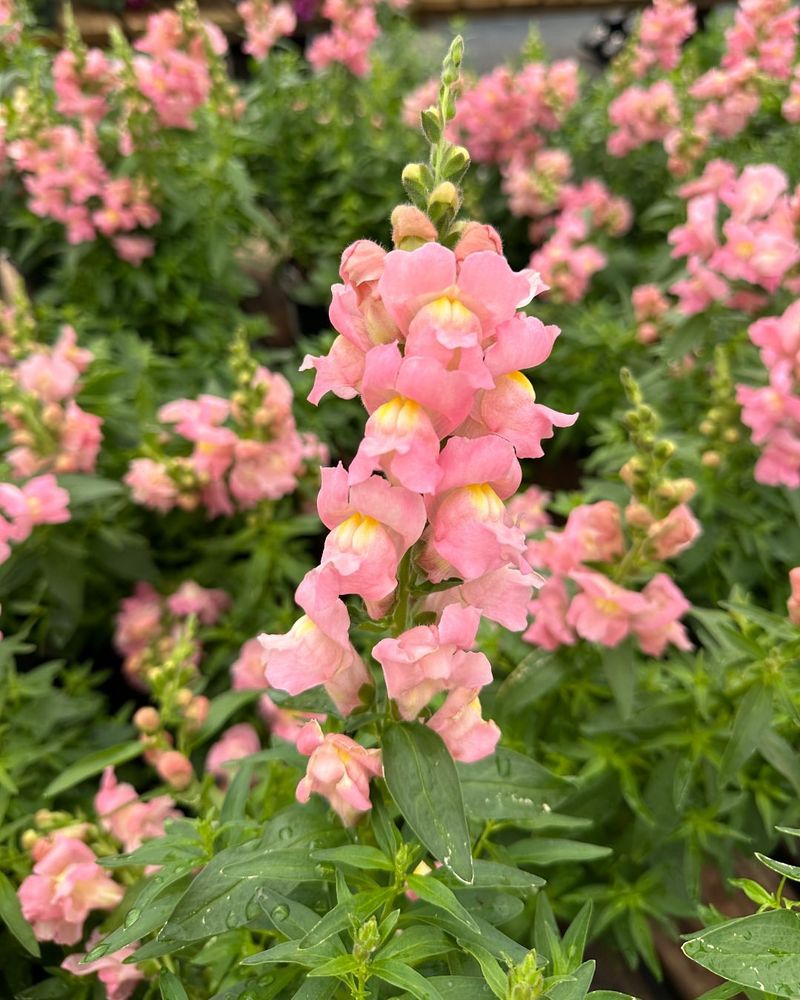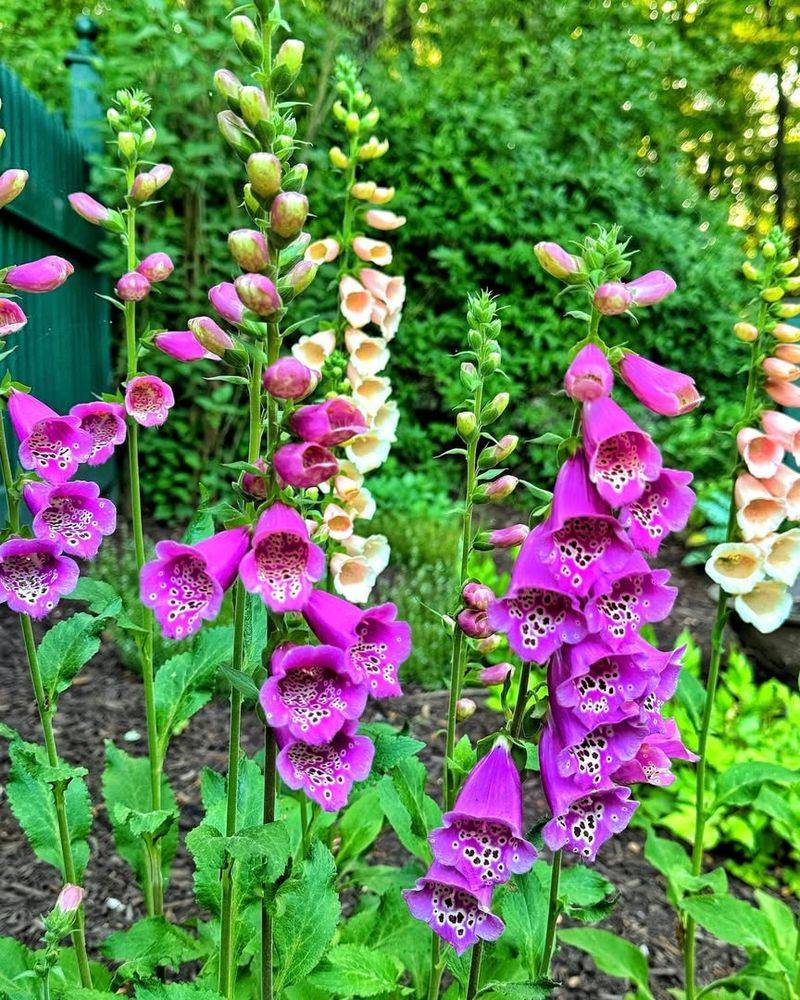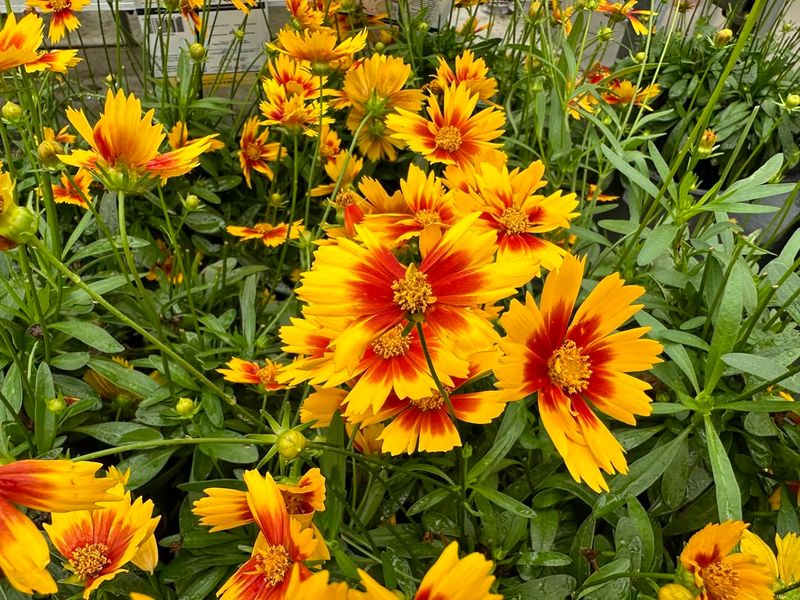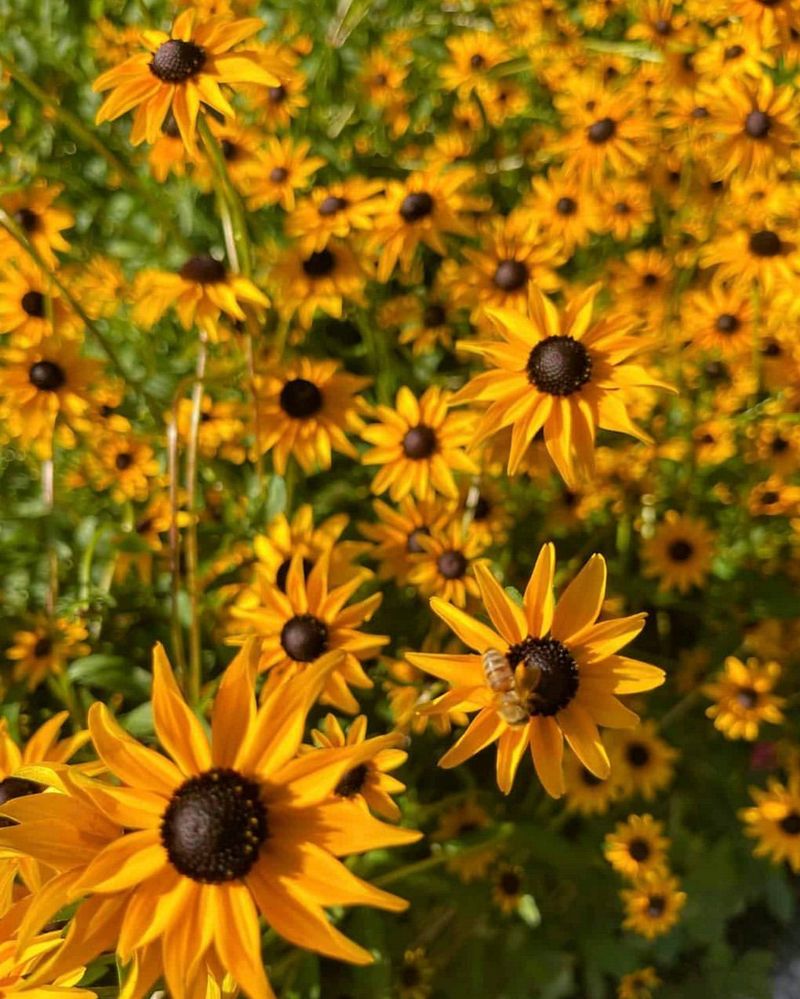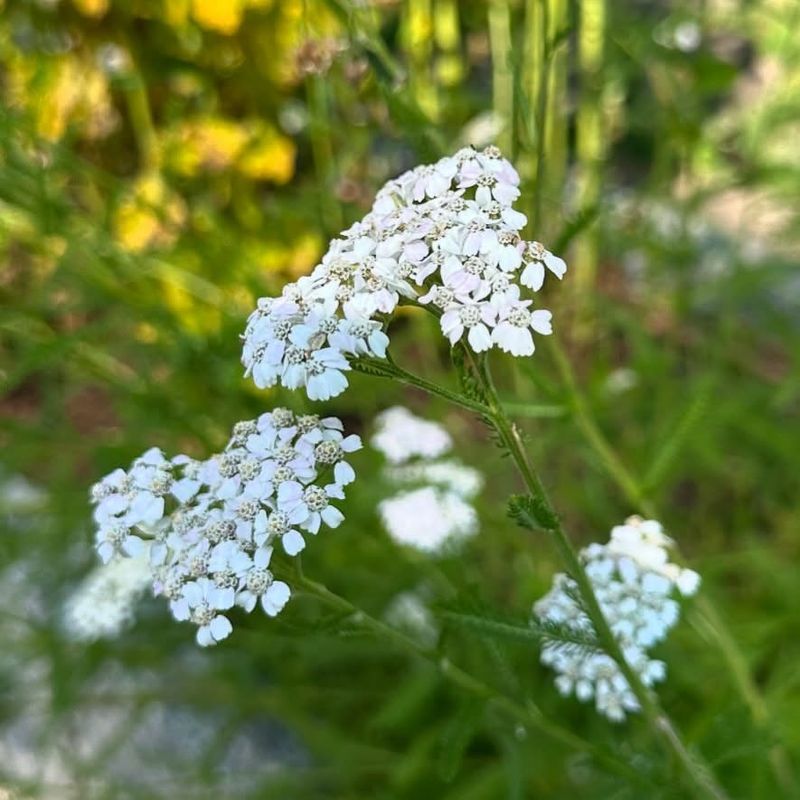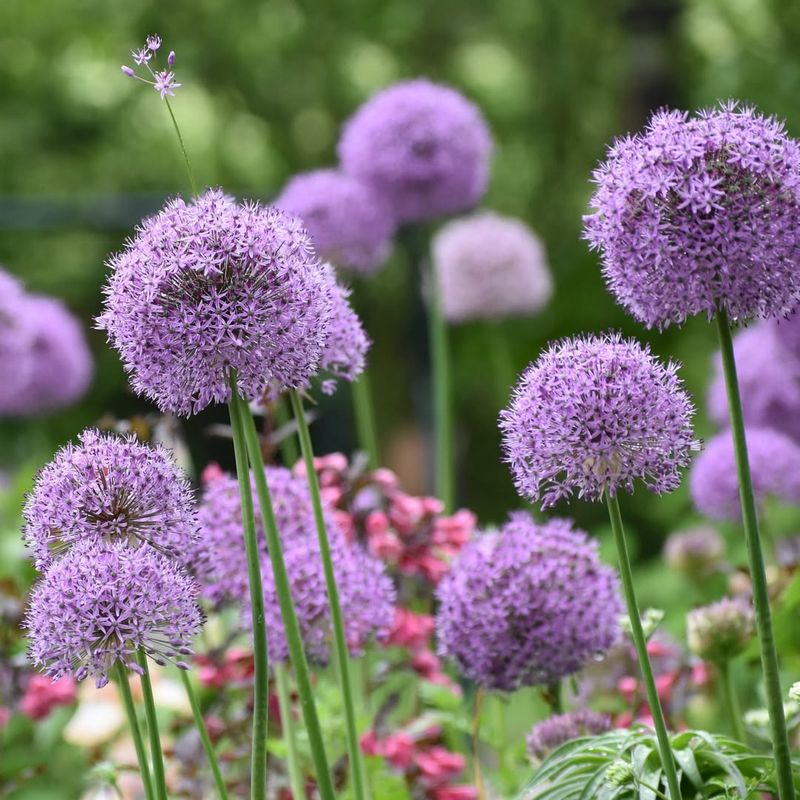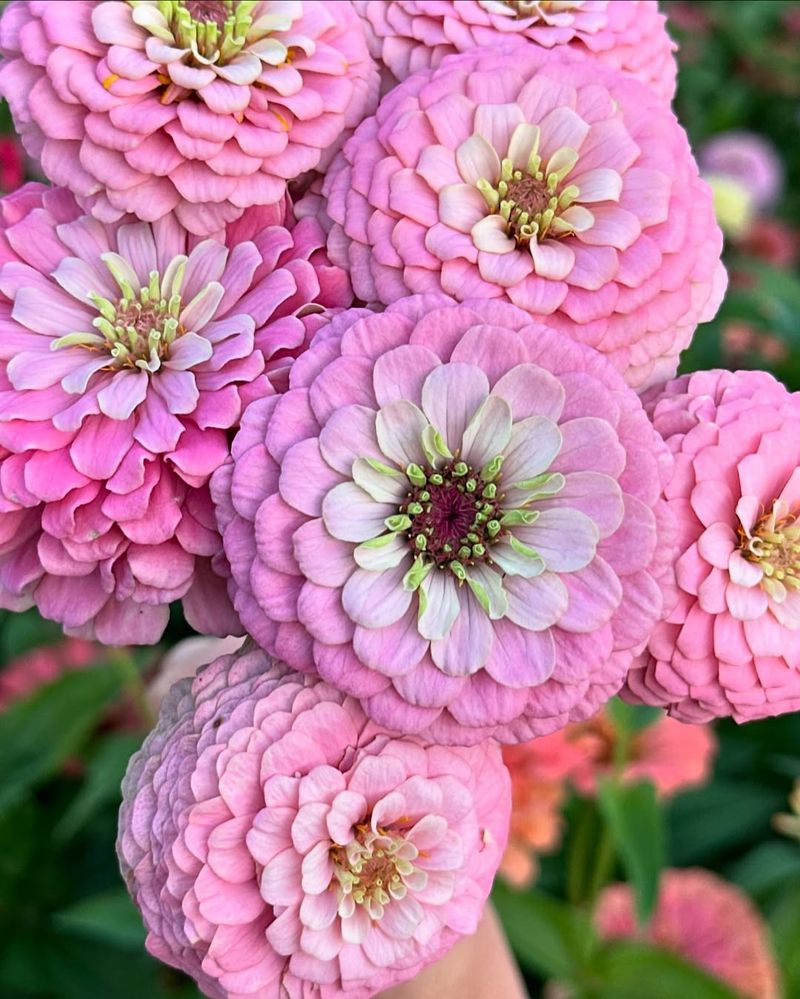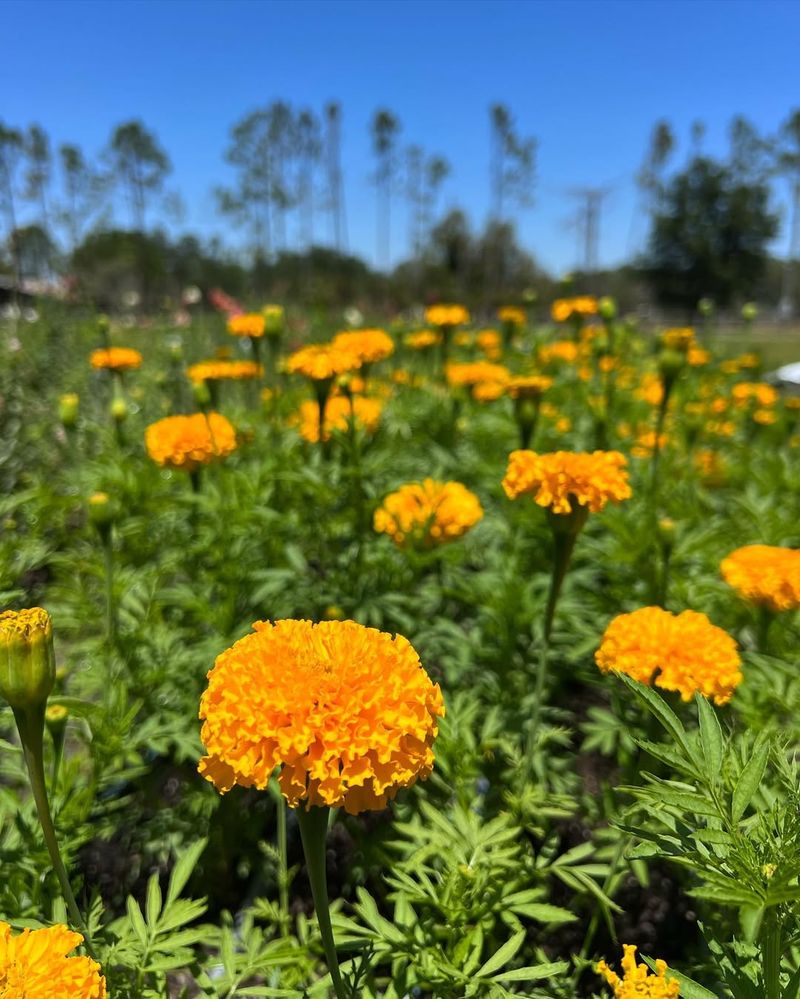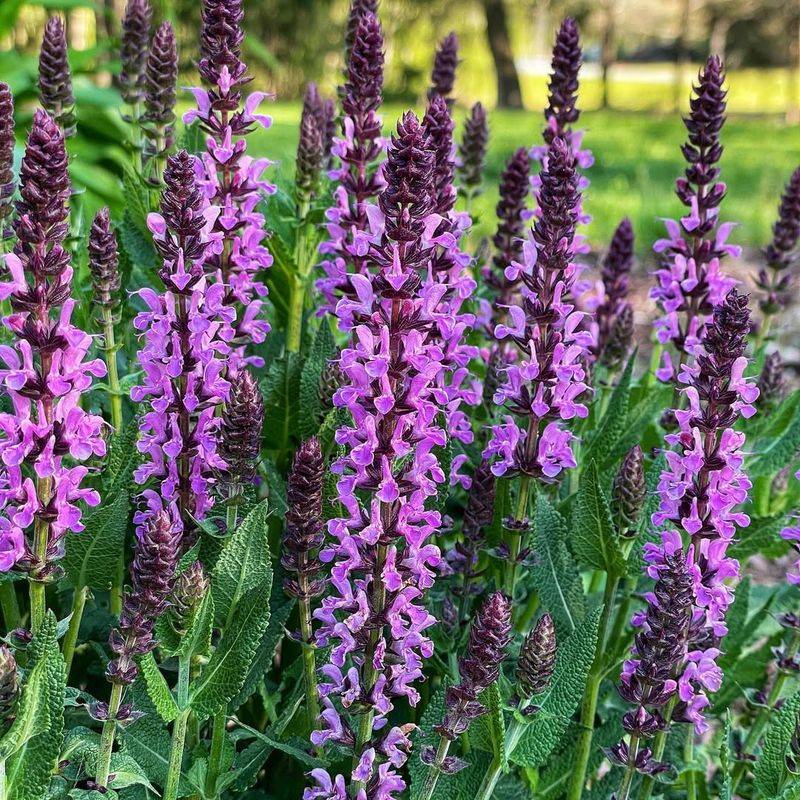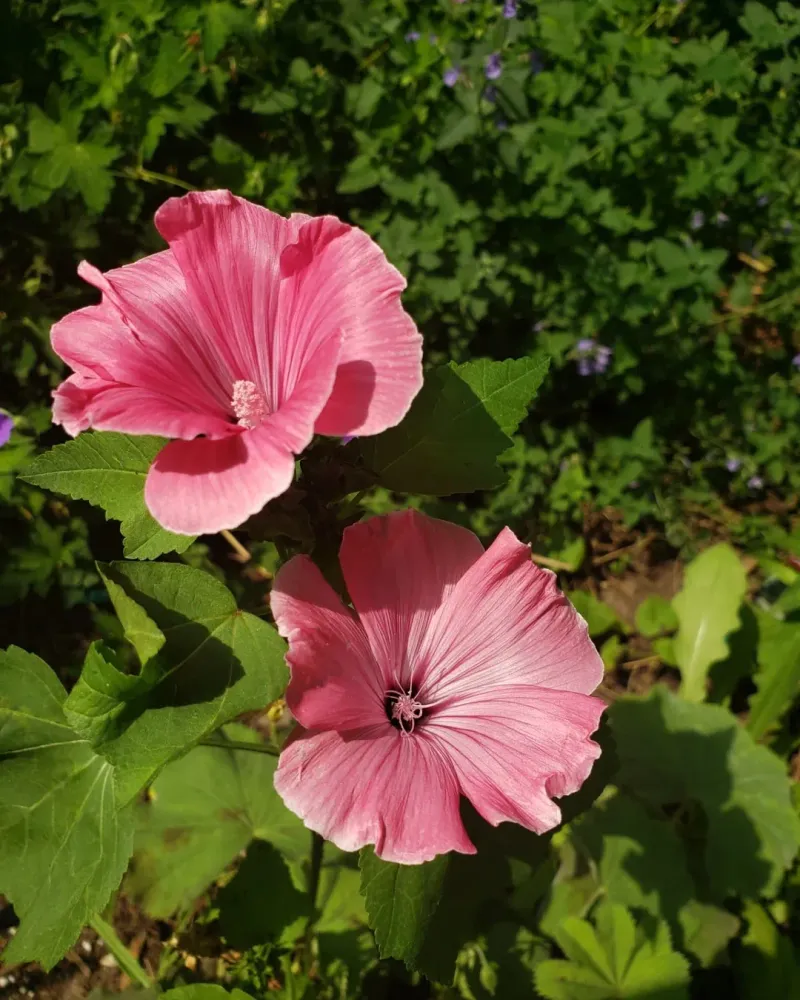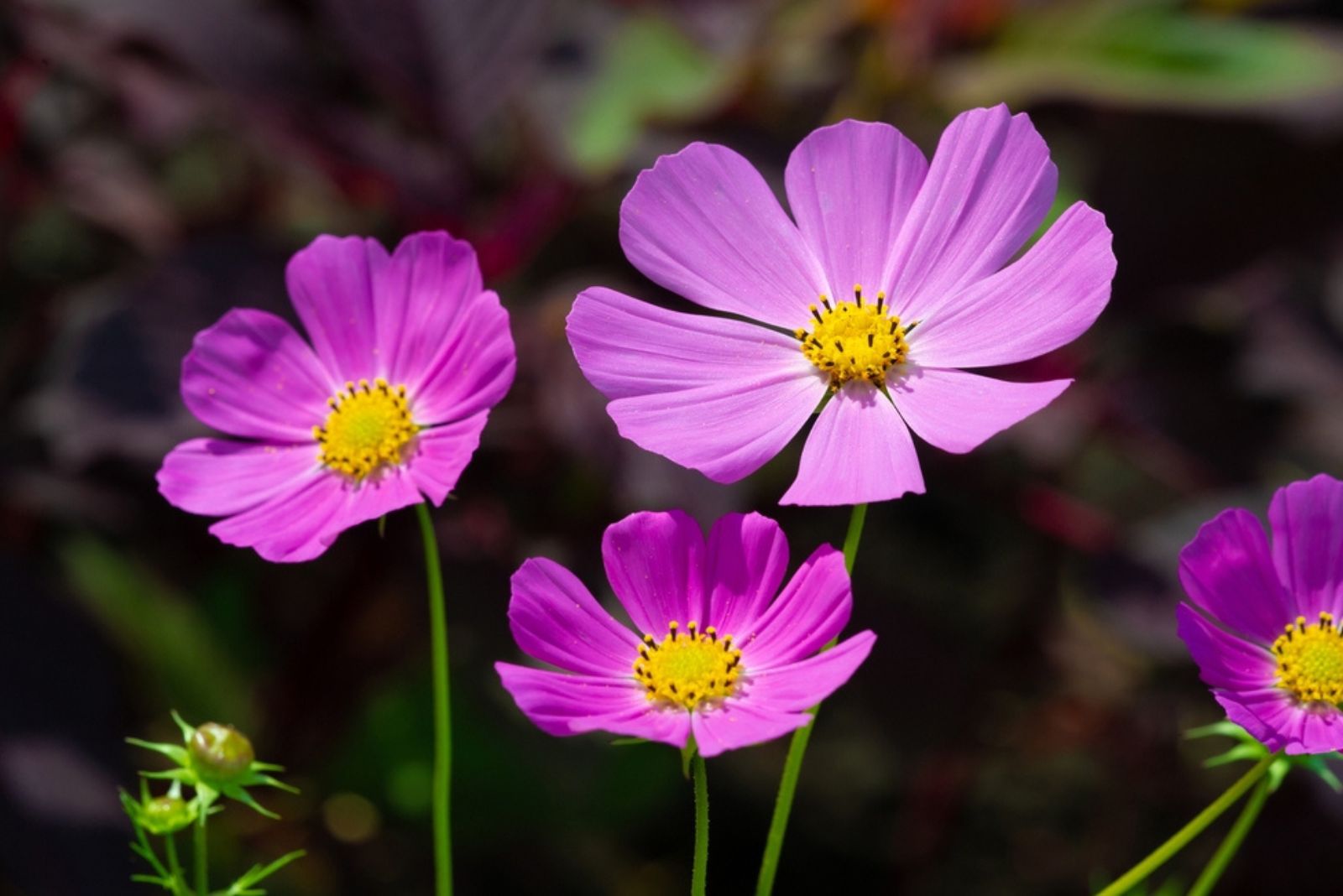Forsythia brings that bold pop of yellow to your garden in early spring—but what do you plant around it? The key is finding companions that balance its bright blooms, fill in after it fades, or add texture and contrast to keep things interesting all season long.
Whether you’re going for a soft, romantic look or want to keep the color show going, there are plenty of great options. Here are 20 beautiful plants you’ll definitely want to grow near your forsythia—plus 13 bonus picks that are just too stunning to ignore.
1. Lavender
Garden aroma that welcomes you before you even enter. That’s the subtle yet enchanting scent of lavender. Not only does its soft purple hue complement the bright yellow of forsythia, but it also adds a calming fragrance to your garden space. Lavender thrives in sunny spots, making it a perfect neighbor to the sun-loving forsythia.
Additionally, its drought-resistant nature means less watering hassle. Plus, it’s a magnet for bees and butterflies, which can help pollinate the rest of your garden.
2. Hosta
Find a shade-loving friend in this leafy green beauty. Hosta may not boast vibrant flowers, but its broad, lush leaves create a beautiful contrast to the bright forsythia blooms. Perfect for filling in shady garden spots, hostas are hardy and require minimal fuss to thrive.
While they are primarily known for their foliage, the occasional bloom adds a surprise element. With varieties in leaf color and size, there’s plenty of room for creativity in your garden layout. Just watch out for those sneaky slugs!
3. Tulips
Spring is synonymous with a colorful parade, thanks to these charming bulbs. Tulips burst into a riot of colors that playfully dance beside the golden branches of forsythia. They bring joy to any garden with their cheerful hues and elegant forms.
Easy to plant and care for, tulips are a bulbous delight that come back year after year. Plant them in clusters for a dramatic effect, and watch them steal the show. Just be ready for some digging if you have hungry squirrels around!
4. Peonies
Big, bold, and beautiful – these flowers are the divas of the garden. Peonies offer lush blooms and striking foliage that pairs perfectly with forsythia’s golden tones. Known for their longevity, peonies return each spring, demanding little more than admiration.
Their classic beauty makes them a garden favorite. Peonies require a bit of patience as they take time to establish, but the wait is worth it. With minimal maintenance, they offer maximum impact. Just beware of ants—they love peonies almost as much as you will.
5. Daffodils
A garden’s sunny disposition is elevated by these cheerful blooms. Daffodils are the quintessential spring flowers that sing in harmony with forsythia’s golden notes. Their trumpet-shaped flowers add a layer of texture and charm to any garden setting.
Easy to grow and deer-resistant, daffodils are a gardener’s best friend. Plant them in groups for a naturalized look, and they’ll surprise you every spring. While they’re carefree and vibrant, be cautious of curious pets, as daffodils can be toxic if ingested.
6. Lilac
When spring arrives, so does the sweet fragrance of lilacs. Their delicate purple blossoms contrast beautifully with the bright yellow forsythia, creating a stunning visual feast. Lilacs are well-loved for their intoxicating scent and classic garden appeal.
With proper pruning, they can become a centerpiece in any garden. These hardy shrubs are low-maintenance and can thrive in various climates. Just be prepared for a short blooming season, as their beauty is fleeting but unforgettable. Perfect for cut flowers, lilacs bring a touch of elegance indoors.
7. Daylilies
If you’re looking for a reliable garden performer, look no further. These perennial favorites are known for their bright, trumpet-like flowers that appear in a dazzling array of colors. Daylilies offer a perfect complement to the golden hues of forsythia.
Their long blooming season means you’ll enjoy color all summer long. Plus, they’re hardy and adaptable, making them perfect for novice gardeners. While each bloom lasts just a day, don’t worry—new blooms will keep popping up, ensuring your garden stays lively.
8. Azaleas
Springtime brings a burst of color, especially when these lovelies are in bloom. Azaleas offer a dazzling display with their vibrant blooms in shades of pink, red, and white. They complement the sunny hues of forsythia beautifully, creating a striking garden tableau.
These shrubs flourish in partial shade and can transform any dull corner into a lively spectacle. Though they require acidic soil and some extra care, the reward is a garden full of color. Just remember, azaleas can be picky about their environment, so pamper them a bit.
9. Pansies
These little delights bring a splash of color to any garden. Pansies are known for their bright faces and cheerful demeanor that mesh wonderfully with the golden blooms of forsythia. They’re perfect for filling gaps in your garden with a burst of joy.
Easy to grow and frost-tolerant, pansies are the gardeners’ go-to for early spring color. With a variety of color combinations, they offer plenty of creative potential. Just give them some sun and watch them thrive. They might be small, but they pack a punch!
10. Crocus
Spring’s first whispers are often heard through these charming blossoms. Crocuses are among the earliest to bloom, often pushing through snow to announce the season. Their vibrant purples and yellows dance gracefully with the golden tones of forsythia.
They’re easy to plant and require little maintenance, making them a top choice for busy gardeners. Plant them in clusters for a natural look that will return year after year. While their blooms are short-lived, they offer a burst of color when you need it most.
11. Irises
Embrace a touch of elegance with these stately blooms. Irises are known for their striking appearance and come in an array of colors that complement forsythia’s sunny disposition. Their tall, slender stems make them a standout addition to any garden.
Irises are easy to grow, thriving in a variety of conditions. They make excellent cut flowers, allowing you to bring their beauty indoors. Just ensure they have good drainage, and they’ll reward you with vibrant blooms year after year. A little regal, a lot stunning.
12. Hydrangeas
What do you get when you mix big blooms with garden charm? Hydrangeas! These flowering shrubs offer large, showy blossoms that complement the bright yellow forsythia beautifully. With varieties that bloom in blue, pink, or white, the options are endless.
Hydrangeas thrive in sunny to semi-shady spots and prefer moist, well-draining soil. They’re a bit thirsty, so keep them watered for the best blooms. With a long blooming season, these beauties will keep your garden lively through summer. Just watch out for their mood swings in acidic soil!
13. Rhododendrons
When grandeur meets garden, you get rhododendrons. These shrubs boast large, bell-shaped flowers that pair well with the bright forsythia. Offering blooms in various shades, they transform any garden into a floral wonderland.
Rhododendrons thrive in acidic soil and partial shade, making them perfect companions in a woodland garden setting. While they are a bit high-maintenance, the floral display is worth every effort. Just be prepared for some extra attention during dry spells, as they prefer moist conditions.
14. Snowdrops
Who says winter can’t be beautiful? These dainty flowers are often the first to emerge, braving the cold to signal spring’s approach. Snowdrops create a delightful contrast with the golden branches of forsythia, offering a glimpse of hope in the garden.
Easy to grow in moist, well-drained soil, snowdrops multiply quickly, creating a carpet of white as they spread. Perfect for naturalizing under trees or shrubs, they require minimal care. Their charm lies in their simplicity—a quiet reminder that warmer days are near.
15. Bleeding Hearts
Add a touch of romance to your garden with these heart-shaped flowers. Bleeding hearts are known for their unique blooms that resemble, well, bleeding hearts. Their gentle pink and white tones provide a soft counterpoint to the vibrant forsythia.
These perennials thrive in shady spots, making them perfect for woodland gardens. They’re low-maintenance and resistant to pests, ideal for gardeners of all levels. While their flowers are short-lived, they’ll come back year after year, ensuring your garden remains charming and inviting.
16. Geraniums
Meet the reliable workhorse of the garden world. Geraniums bring a splash of color and a no-fuss attitude to your garden. Their pink and red blooms contrast beautifully with forsythia’s golden glow. These easy-to-grow perennials thrive in various conditions and require minimal care.
They’re perfect for those who want color without the hassle. With deadheading, they’ll continue to bloom throughout the season. Perfect for containers or border plantings, geraniums are a versatile addition to any garden.
17. Primroses
A garden party isn’t complete without these cheerful guests. Primroses come in a variety of colors, offering endless possibilities for adding vibrancy to your garden. Paired with forsythia, they create a lively, harmonious scene.
These perennials thrive in cool, moist conditions and are easy to care for. Perfect for adding early color, primroses are often among the first to bloom in spring. Their sturdy nature makes them ideal for novice gardeners looking to experiment. Just keep them watered, and they’ll reward you with cheerful blooms.
18. Phlox
Looking for a cascading display of color? Phlox is your answer. These charming perennials offer dense clusters of blooms that complement the sunny forsythia. Available in a variety of colors, they create a striking display when planted en masse.
Phlox is a garden favorite for its long blooming season and easy care. It’s perfect for adding color to borders or filling gaps in the garden. Just ensure it gets plenty of sun and water, and it’ll provide a lush carpet of blooms that attract pollinators galore.
19. Bluebells
Wander into a woodland wonderland with these enchanting blooms. Bluebells create a carpet of blue that contrasts beautifully with forsythia’s golden hues. Their nodding flowers sway gently in the breeze, adding a touch of magic to your garden.
Bluebells thrive in shady, wooded areas and are perfect for naturalizing. They’re low-maintenance and multiply quickly, creating a sea of blue each spring. While short-lived, their impact is lasting. Just be mindful not to pick them, as they are protected in many areas.
20. Coneflowers
These towering beauties bring a wildflower vibe to your garden. Coneflowers, with their spiky centers and vibrant petals, pair wonderfully with the cheerful forsythia. Available in a range of colors, they add a dynamic element to any garden setting.
Hardy and drought-tolerant, coneflowers are perfect for sunny spots. They’re easy to grow, making them ideal for beginners and seasoned gardeners alike. Plus, they attract a host of pollinators, ensuring your garden buzzes with life. Just remember, they’re not fans of wet feet, so good drainage is key.
21. Astilbes
For a touch of elegance, consider these feathery beauties. Astilbes bring a soft, airy texture to the garden, complementing the bold forsythia. With their fern-like foliage and plume-like flowers, they add a unique element to any shady spot.
These perennials thrive in moist, well-drained soil and require little maintenance. They’re perfect for adding texture and interest to borders or woodland gardens. While their blooms are short-lived, their foliage provides lasting interest. Plus, they’re resistant to deer, which is always a bonus.
22. Columbines
Add a touch of whimsy with these intricate blooms. Columbines are known for their unique, spurred flowers that come in a range of colors, complementing the sunny tones of forsythia beautifully. These perennials thrive in well-drained soil and can tolerate partial shade, making them perfect for rock gardens or borders.
They’re easy to grow and will self-seed, ensuring a continuous display of blooms. While their flowers are short-lived, they offer plenty of charm and interest. Plus, they’re a favorite among hummingbirds!
23. Snapdragons
These playful blooms bring a touch of nostalgia to any garden. Snapdragons are known for their unique, mouth-like flowers that delight children and adults alike. They offer a playful contrast to the bright, golden forsythia.
Easy to grow in sunny locations, snapdragons are perfect for adding height and color to borders. They’re great for cutting, allowing you to enjoy their charm indoors as well. Just deadhead regularly to encourage continuous blooms throughout the season. A childhood favorite that never loses its appeal!
24. Foxgloves
Add a touch of drama with these towering blooms. Foxgloves offer tall spires of bell-shaped flowers that create a striking effect against the golden forsythia. These biennials thrive in dappled shade and well-drained soil, making them perfect for woodland gardens.
While they require a bit of patience, as they take two years to flower, the wait is worth it. Just be aware that all parts of the plant are toxic, so handle with care. A little bit of caution for a lot of beauty.
25. Coreopsis
Bring the sunshine into your garden with these cheerful blooms. Coreopsis, with their daisy-like flowers, offer a vibrant contrast to the golden hues of forsythia. These perennials are easy to care for, thriving in sunny spots with well-drained soil.
They’re drought-tolerant, making them perfect for low-maintenance gardens. With a long blooming season, they’ll keep your garden lively all summer long. Just deadhead regularly to encourage more blooms. A sunny disposition in plant form!
26. Black-Eyed Susans
These sunny flowers bring a touch of wild charm to any garden. Black-eyed Susans, with their bright yellow petals and dark centers, offer a delightful contrast to the golden forsythia. They’re hardy and easy to grow, thriving in full sun and well-drained soil.
Perfect for beginners, these perennials require little maintenance and attract a variety of pollinators. Plus, they’re deer-resistant, which is always a plus. With their cheerful blooms, they add a touch of summer sunshine to your garden.
27. Yarrow
For a touch of wildflower charm, consider these hardy perennials. Yarrow offers clusters of flat-topped flowers that complement the sunny forsythia beautifully. These drought-tolerant plants thrive in sunny spots and require minimal care, making them perfect for low-maintenance gardens.
They’re also deer-resistant, which is a bonus for rural gardeners. With a long blooming season, yarrow will keep your garden lively through the summer. Just be mindful—they can be a bit invasive, so keep an eye on their spread.
28. Alliums
Add a touch of whimsy with these spherical blooms. Alliums, with their tall, globe-like flowers, create a unique contrast with the forsythia’s golden branches. These bulbs are easy to grow, thriving in sunny spots with well-drained soil.
They’re perfect for adding height and interest to borders. Plus, they’re resistant to pests and deer, making them a worry-free addition to your garden. With their long-lasting blooms, alliums offer a touch of elegance and playfulness to any garden setting.
29. Zinnias
Get ready for a burst of color with these bright beauties. Zinnias, with their vibrant petals, bring a playful contrast to the golden forsythia. These annuals are easy to grow and thrive in sunny locations. They’re perfect for adding color to borders or filling gaps in the garden.
With a variety of colors and shapes, zinnias offer plenty of creative possibilities. Plus, they’re excellent for cutting, allowing you to enjoy their charm indoors. Just keep them deadheaded for continuous blooms.
30. Marigolds
These classic garden staples bring a pop of color and a touch of tradition to any garden. Marigolds, with their cheerful blooms, complement the sunny forsythia beautifully. These annuals are easy to grow and thrive in sunny spots.
They’re perfect for adding color to borders or filling gaps in the garden. With their pest-repellent properties, marigolds are a gardener’s ally. Just keep them deadheaded for continuous blooms. A little bit of sunshine and a lot of charm!
31. Salvia
For a burst of color, consider these spiky blooms. Salvia, with their rich, vibrant colors, offer a striking contrast to the sunny forsythia. These perennials are easy to grow and thrive in sunny locations. They’re perfect for adding height and color to borders.
With a long blooming season, salvia keeps your garden lively through the summer. Plus, they’re deer-resistant, making them a worry-free addition. Just keep them deadheaded for continuous blooms. A little bit of maintenance for a lot of beauty.
32. Lavatera
These charming blooms bring a touch of elegance to any garden. Lavatera, with their delicate flowers and lush foliage, create a beautiful contrast with the bright forsythia. These annuals are easy to grow and thrive in sunny locations.
They’re perfect for adding color to borders or filling gaps in the garden. With their long blooming season, lavatera offers continuous color throughout the summer. Just keep them deadheaded for more blooms. A little bit of effort for a whole lot of elegance.
33. Cosmos
Ready to add some airy elegance to your garden? Cosmos, with their delicate, daisy-like flowers, provide a whimsical touch that plays beautifully with the cheerful forsythia. These annuals are known for their graceful, feathery foliage and tall, slender stems.
Cosmos are perfect for filling in gaps or creating a meadow-like garden feel. They’re easy to grow from seed, requiring little more than sunlight and occasional watering. With their long blooming season, cosmos keep your garden lively all summer. A little care goes a long way with these beauties.

